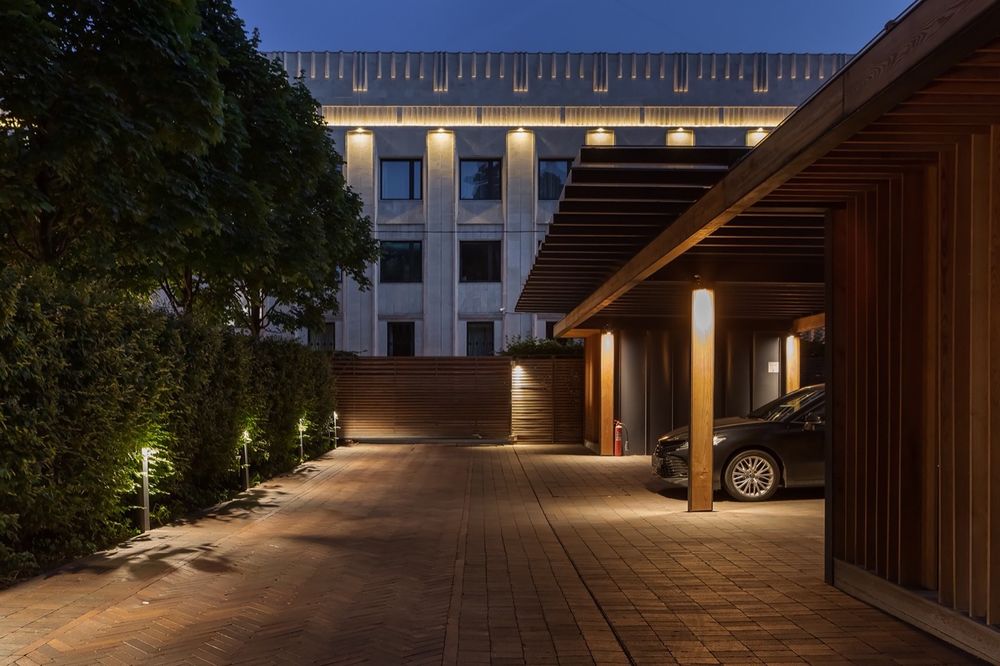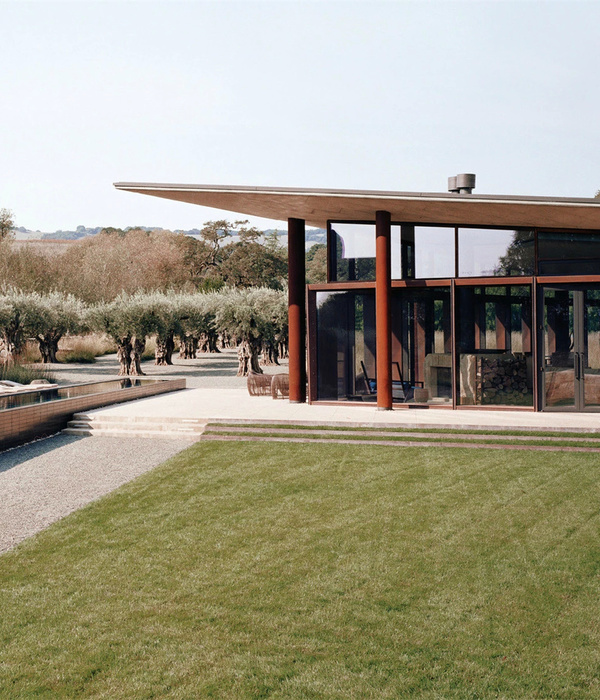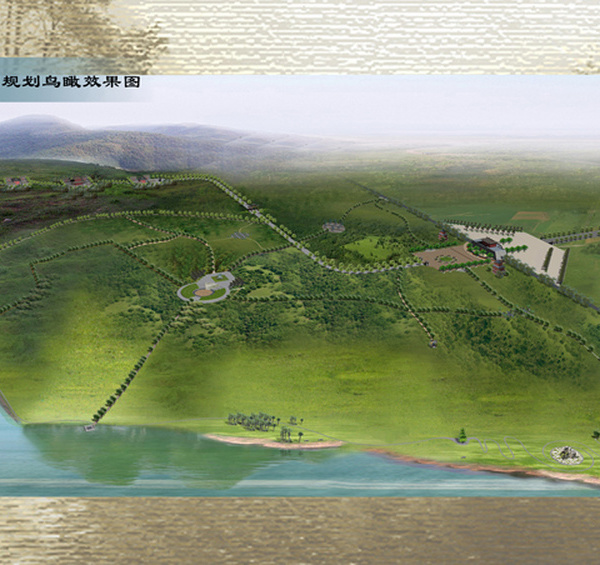"莫斯科隐藏花园 | 古老林荫道与现代儿童之家的惊艳结合"

The site of the garden is a small piece of 19th-century Moscow squeezed in between roads and new residential and office buildings in the very centre of the city. Times ago the house was a part of a large mansion with a vast territory. After the revolution of 1917 and during the Soviet period the majority of the building was destroyed, and the territory was appropriated by different government organizations. When the client owned the property for the business residence it was an abandoned house with an overgrown plot of land.
Our task was to create a space hidden from outside views both from streets and windows and to locate a bunch of service functions on a tiny plot. First of all, we started from looking for what can and is worth preserving, and how we can use those remnants from the past. We discovered the remains of an old linden alley on one side of the house. The trees were in bad condition – there was asphalt that covered the root crown. They were freed and the alley was prolonged with the new lindens. Along this axis, the service functions were placed and covered with the wooden canopy.
The house itself was also excavated from late layers. This allowed us to create an open wooden terrace around the building and visually enlarge the façade. The main façade was complemented by the symmetrical composition of the lawn and the dining area under the lindens on the opposite side. There were few maples on the site in good condition which already hid part of the garden from the outside – they were kept and added with the new ones.
The site is very small and becomes a continuation of the house. Different open-air rooms appeared there – dining room, meeting room, terrace, kids area, kitchen garden, garage. The idea of plants’ choice was to use them as natural architectural elements that can form the space. Thus, the linden hedge was used for walls, the pleached lindens with pruned crowns for making the ceiling. Other plants of different height for dividing the site and hiding the inhabitants from curious looks.
The site is lower than the surrounding area and there was no possibility to use the city drainage system. All water is gathered on the site and managed through the passive filtration system. The kids’ house was added in 2019. There was a request for the tree house but the old lindens are very fragile to place anything on them and the new trees are still very young. The solution we found was to place the structure among the old trees as it is hugging but not touching them. The area under the house will gradually be overgrown with ferns and other shade-loving plants, and the construction will slowly merge into the greenery. The main challenge in this project was to create a secluded space amid the bustling Moscow, like a teleport from stress to relaxation.
We tried to return the original function of the house and its territory – a place to live in and feel comfortable and safe. Despite the noisy neighbourhood, high buildings around, constraints of underground engineering systems and space limitations we think we succeeded in doing this.



















Office name: architectural studio UTRO
Social media accounts:
behance.net/hellof34f
Firm location: Moscow, Russia Project location: Russia, Moscow Completion year: 2017 Lead architects: Marina Yarmarkina, Alena Zaitseva with participation of Margarita Leonova, Stas Dervoedov, Daria Dordina Other designers involved in the design of landscape: Studio Natureform (planting), Kultura sveta (consultant in lighting design) Photographer: Olga Alexeyenko












